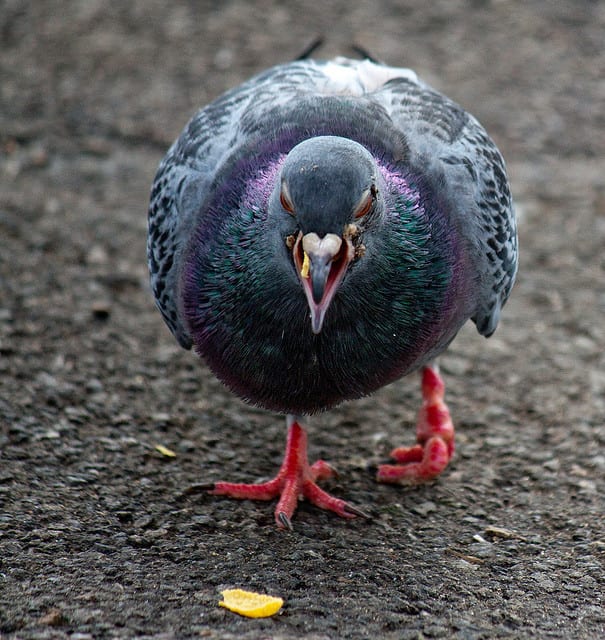
by Pigeon Patrol | Jul 20, 2023 | 4-S Gel Bird repellent, Animal Deterrent Products, Bird Deterrent Products, Bird Law, Bird Netting, Bird Spikes
We trap, poison or push these nuisance birds away from bridges and the ledges of downtown buildings, but perhaps pigeons are just misunderstood. At least, that’s what a group of university researchers think. They’re testing a new, er, old approach, really, to the problem of pigeon poop.
By this time next year, they’ll have at least one attractive stone “pigeon cote” to house the birds, attracting them to one place in order to concentrate the poop and use it as fertilizer. It works with nature, rather than controlling it, and aims to restore an ancient, mutually-beneficial relationship that modern society simply forgot.
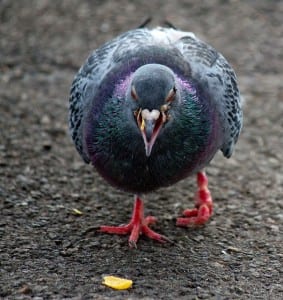
Yuck. Yes, I know. But intriguing as well. As city council heads into a week full of tough environmental decisions, I wonder if there’s a broader wisdom here that can help.
But first, these pigeons.
Pigeons really are the flying kings of poop. One study found they poop up to 40 times a day, although English researcher Kristine Kowalchuk (’12 PhD) would put that closer to 10, based on what she saw from a rescued baby pigeon.
She was walking out of the Art Gallery of Alberta one afternoon in the spring of 2016 when she found the tiny bird sitting quietly in the gutter. She picked it up, carried it home and raised it in her spare room until it was too big and messy to keep any longer.
That’s what got her thinking about pigeons, and the many references to squab (young pigeon) and the excellence of pigeon droppings as fertilizer she found littered throughout 17th century cookbooks and farming manuals during her English PhD.
It turns out farmers across Europe and North Africa would create large houses for free-ranging pigeons in fields or above their homes so that the birds would roost in one spot. That way both the young birds and poop could be harvested.
Now Kowalchuk, along with UAlberta professors Debra Davidson, an environmental sociologist, Howard Nye (Philosophy) and Aidan Rowe (Art & Design) using a $7,500 grant to build their own pigeon cote. It’s being built on a farm near Camrose because none of the five organizations with pigeon problems they contacted here in the city would entertain the idea.
They’re hoping a year observing the cote in action will change attitudes.
“We have so many misconceptions and cultural bias,” says Kowalchuk, citing studies measuring the risk of getting sick from being around the poop as tiny, akin to getting sick from a pet dog or breaking a leg from slipping on a dandelion. The person shovelling it out periodically would simply wear a mask.
Plus, the cote itself doesn’t increase populations; only feeding them does that, she says. “Our parks and flower beds could all benefit. Another way of looking at pigeons is entirely possible.”
I love the simplicity of Kowalchuk’s approach. I love the way it turns our pigeon problem on its head, resets a relationship.
That’s why I’ll be pondering pigeons as council wrestles with the environment file next week: first with its greenhouse gas reduction targets on Tuesday, then with waste management Thursday and a proposed ban on single-use plastics.
Because pigeon control isn’t the only area where humans expect we can control and build our way out of a mess with technology. We pave large parking lots and wonder why we have flooding. We cut trees and seem puzzled at the heat and dust of the city. We set out one big bag of all our trash and wonder why garbage fees keep rising.
I don’t think a single-use plastic ban will help much. It’s too narrow and complicated to administer. I’d rather see small fees for bags at the grocery store combined with measures that actually change a culture – like neighbourhood-level composting with free soil in exchange for yard waste drop-offs.
As for curbing carbon emissions, city officials have a long list of actions needed, from incentivizing electric cars to expanding district energy. But I don’t think technology is enough to solve this issue, not without a cultural change. Perhaps the lessons of pigeon poop will help there, too.
Source
Pigeon Patrol Products & Services is the leading manufacturer and distributor or bird deterrent (control) products in Canada. Pigeon Patrol products have solved pest bird problems in industrial, commercial, and residential settings since 2000, by using safe and humane bird
deterrents with only bird and animal friendly solutions. At Pigeon Patrol, we manufacture and offer a variety of bird deterrents, ranging from Ultra-flex Bird Spikes with UV protection, Bird Netting, 4-S Bird Gel and the best Ultrasonic and audible sound devices on the market today.
Voted Best Canadian wholesaler for Bird Deterrent products ten years in a row.
Contact us at 1 877-4-NO-BIRD,(604) 585-9279 or visit our website at www.pigeonpatrol.ca
Pigeon/Pigeon Patrol / Pigeons Roosing / Vancouver Pigeon Control / Bird Spikes / Bird Control / Bird Deterrent / PIgeon Deterrent / Surrey Pigeon Control / Pest / Seagull deterrent / Vancouver Pigeon Blog / Birds Inside Home / Pigeons in the cities / Ice Pigeons / What to do about pigeons / sparrows, Damage by Sparrows, How to Keep Raccoons Away, Why Are Raccoons Considered Pests / De-fence / Pigeon Nesting / Bird Droppings / Pigeon Dropping / woodpecker control / Professional Bird Control Company / Keep The Birds Away / Birds/rats/seagull/pigeon/woodpecker/dove/sparrow/pidgeon control/pidgeon problem/pidgeon control/flying rats/pigeon problems/ bird netting/bird gel/bird spray/bird nails/bird guard
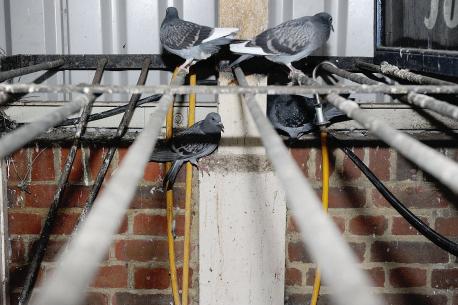
by Pigeon Patrol | Jul 20, 2023 | 4-S Gel Bird repellent, Animal Deterrent Products, Bird Deterrent Products, Bird Law, Bird Netting, Bird Spikes
Wageningen University released the results of research on a poultry farm that suffered visits from wild waterfowl, which are a source of the avian influenza virus (AIV).
The study revealed that when the laser was in use, a 99.7% wild bird reduction rate was recorded.
Wageningen Bioveterinary Research (WBVR), part of the Wageningen University, previously discovered a mallard, which is a species identified as a high-risk bird for carrying the avian flu virus, was frequenting a free-range area of a poultry farm from sunset to sunrise. This was notable from November to February, the typical bird migration period and when the avian influenza virus is more prevalent. Therefore, chickens in the free-range area had increased exposure to the virus, due to the regular occurrence of wild waterfowl during this time.
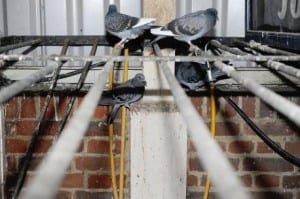
The project leader of the study, and epidemiologist at WBVR, Armin Elbers, explained: “Several mallards came to visit the range between sunset and sunrise daily. They look for food and swim in puddles of water that are formed during the winter period by abundant rainfall in the range. While swimming in the puddles, the ducks may defecate. During the day, the chickens drink the same water, as we saw in the video camera images. In the cold winter period, the bird flu virus can survive in such water for a long time.”
Wageningen University & Research did a study with the laser bird deterrent manufactured by Bird Control Group. This study explored whether the laser system could be a successful biosecurity measure to prevent avian influenza viruses from spreading from wild birds to domestic animals. The laser bird deterrent system has been used worldwide in a variety of applications to reduce bird presence. The system spooks birds away by projecting a green laser beam across areas where birds aggregate. The birds see the green laser beam as a solid object and instinctively perceive it as a physical threat, causing them to flee the area immediately.
The WBVR study took place in the winter of 2019-2020. The laser bird deterrent system was deployed on a six-meter-high pole in the farm’s free-range area of 1.5 hectares. In that area, eight wide-angle video cameras were installed to record visits of wild birds. The laser bird deterrent was active in the free-range area between 5 pm, and 10 am when the laying hens were in the barn. Between 10 am and 5 pm, the laying hens were in the free-range area, and the laser was used to protect the grass pastures surrounding the farm. The study was carried out over two months: one month without the laser, followed by one month with the laser.
Elbers earlier discussed the study during the International Egg Commission webinar, “AI Prevention and Innovative Biosecurity Measures — How the Dutch Egg Industry is Tackling AI,” held in October 2020. He said at the time the results would be released soon.
Study results
The results of the study indicated that virtually no wild ducks visited the free-range area (99.7% prevention rate) when the laser was in use. There was also a reduction of visits from other wild birds in the free-range area during sunrise, and 10 a.m. (about 96% prevention). The research interpreted, “The overall (all bird species) efficacy of the laser for reducing the rate of wild birds visiting the free-range study area was 98.2 %.”
When the laser was not in use in the free-range area, a significant number of geese would visit the surrounding grass pastures during the day.
Elbers concluded: “In this study, we confirm the high efficacy of using lasers to reduce the daily number of wild bird visits to the free-range area of a layer farm situated in an AIV-hotspot area. Given this high efficacy, the application of these lasers becomes a viable alternative for the prevention of introduction of avian influenza infections in poultry.”
Industry knowledge and future perspective
“For free-range poultry farms located in high-risk avian flu virus areas, which had repeated introductions of avian flu virus in the past, we believe that a laser could be helpful as a preventive measure to keep wild birds away from the farm during the high-risk period (October to March). Poultry farms with strictly indoor accommodations have also been infected with avian influenza virus in the past due to their location near wetlands. Using a laser during the high-risk period could offer a solution to this problem too by keeping wild waterfowl away from the vicinity of the barn,” Elbers stated.
The laser bird repellent has already been deployed at a poultry farm, Orchard Eggs, in the U.K.
Daniel Hoberichts, the owner of Orchard Eggs, understood the biosecurity measures that had to be taken to protect his poultry. He uses the laser bird repellent to prevent the chickens and staff from being exposed to the avian influenza virus.
Hoberichts explained: “Our birds are housed across 50 acres of orchard and we want to do everything to keep them safe from infection. Once we heard about the AVIX Autonomic it seemed like an ideal solution to complement all of our other biosecurity measures.” The laser bird repellent helped reduce bird presence by more than 90%.
Source
Pigeon Patrol Products & Services is the leading manufacturer and distributor or bird deterrent (control) products in Canada. Pigeon Patrol products have solved pest bird problems in industrial, commercial, and residential settings since 2000, by using safe and humane bird
deterrents with only bird and animal friendly solutions. At Pigeon Patrol, we manufacture and offer a variety of bird deterrents, ranging from Ultra-flex Bird Spikes with UV protection, Bird Netting, 4-S Bird Gel and the best Ultrasonic and audible sound devices on the market today.
Voted Best Canadian wholesaler for Bird Deterrent products ten years in a row.
Contact us at 1 877-4-NO-BIRD,(604) 585-9279 or visit our website at www.pigeonpatrol.ca
Pigeon/Pigeon Patrol / Pigeons Roosing / Vancouver Pigeon Control / Bird Spikes / Bird Control / Bird Deterrent / PIgeon Deterrent / Surrey Pigeon Control / Pest / Seagull deterrent / Vancouver Pigeon Blog / Birds Inside Home / Pigeons in the cities / Ice Pigeons / What to do about pigeons / sparrows, Damage by Sparrows, How to Keep Raccoons Away, Why Are Raccoons Considered Pests / De-fence / Pigeon Nesting / Bird Droppings / Pigeon Dropping / woodpecker control / Professional Bird Control Company / Keep The Birds Away / Birds/rats/seagull/pigeon/woodpecker/dove/sparrow/pidgeon control/pidgeon problem/pidgeon control/flying rats/pigeon problems/ bird netting/bird gel/bird spray/bird nails/bird guard
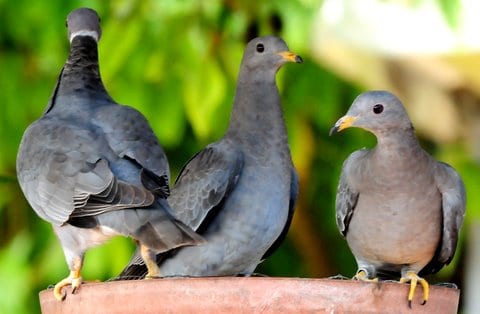
by Pigeon Patrol | Jul 6, 2023 | Bird Law, Bird Netting, Bird Spikes, Columbidae, Doves, Pigeon Droppings, Pigeon Patrol's Services
A team of scientists and conservationists has rediscovered the elusive Black-naped Pheasant-Pigeon, a large, ground-dwelling pigeon that only lives on Fergusson Island, a rugged island in the D’Entrecasteaux Archipelago off of eastern Papua New Guinea. Like other pheasant-pigeons, the Black-naped Pheasant-Pigeon has a broad and laterally compressed tail, which, along with its size, makes it closely resemble a pheasant. The bird has been observed several times over the years by local hunters, but the newly taken photographs and video are the first time the bird has been documented by scientists since 1882, when it was first described. Ornithologists know very little about the species, but believe that the population on Fergusson is very small and decreasing.
The research team photographed the pheasant-pigeon with a remote camera trap at the end of a month-long search of Fergusson.
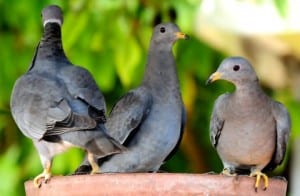
“When we collected the camera traps, I figured there was less than a one-percent chance of getting a photo of the Black-naped Pheasant-Pigeon,” said Jordan Boersma, postdoctoral researcher at Cornell University and co-leader of the expedition team. “Then as I was scrolling through the photos, I was stunned by this photo of this bird walking right past our camera.”
“After a month of searching, seeing those first photos of the pheasant-pigeon felt like finding a unicorn,” added John C. Mittermeier, Director of the Lost Birds program at ABC and co-leader of the expedition. “It is the kind of moment you dream about your entire life as a conservationist and birdwatcher.”
The expedition team — which included local Papua New Guineans working with Papua New Guinea National Museum, Cornell Lab of Ornithology, and American Bird Conservancy — arrived on Fergusson in early September 2022. They spent a month traveling around the island, interviewing local communities to identify locations to set up camera traps in hopes of finding the pheasant-pigeon. The steep, mountainous terrain on Fergusson Island made searching for the bird extremely challenging.
“It wasn’t until we reached villages on the western slope of Mt. Kilkerran that we started meeting hunters who had seen and heard the pheasant-pigeon,” said Jason Gregg, conservation biologist and a co-leader of the expedition team. “We became more confident about the local name of the bird, which is ‘Auwo,’ and felt like we were getting closer to the core habitat of where the Black-naped Pheasant-Pigeon lives.”
The expedition was the first-ever camera trapping study conducted on Fergusson Island. The team placed 12 camera traps on the slopes of Mt. Kilkerran, Fergusson’s highest mountain, and deployed an additional eight cameras in locations where local hunters had reported seeing the pheasant-pigeon in the past.
“When we finally found the Black-naped Pheasant-Pigeon, it was during the final hours of the expedition,” said Doka Nason, the member of the team who set up the camera trap that eventually photographed the lost bird. “When I saw the photos, I was incredibly excited.”
A local hunter named Augustin Gregory in the village of Duda Ununa west of Mt. Kilkerran provided a breakthrough lead on where to find the bird. Gregory reported seeing the pheasant-pigeon on multiple occasions in an area with steep ridges and valleys and described hearing the bird’s distinctive calls.
Following Gregory’s advice, the team set up cameras in an area of dense forest. A camera placed on a ridge at 3,200 feet (1,000 meters) near the Kwama River above Duda Ununa eventually captured the Black-naped Pheasant-Pigeon walking on the forest floor two days before the team was scheduled to leave the island.
Several members of the team have attempted to find the Black-naped Pheasant-Pigeon before. A two-week survey in 2019 by Boermsa, Gregg, and Nason didn’t find any traces of the bird, though it did gather reports from local hunters of a bird that could have been the pheasant-pigeon. The results from that survey helped to determine locations for the team to search in 2022.
“The communities were very excited when they saw the survey results, because many people hadn’t seen or heard of the bird until we began our project and got the camera trap photos,” said Serena Ketaloya, a conservationist from Milne Bay, Papua New Guinea. “They are now looking forward to working with us to try to protect the pheasant-pigeon.”
The team’s findings suggest that the pheasant-pigeon is likely to be extremely rare. The rugged and inaccessible forest where they rediscovered the species could be the last stronghold for the species on the island.
“This rediscovery is an incredible beacon of hope for other birds that have been lost for a half century or more,” said Christina Biggs, Manager for the Search for Lost Species at Re:wild. “The terrain the team searched was incredibly difficult, but their determination never wavered, even though so few people could remember seeing the pheasant-pigeon in recent decades.”
“As well as giving hope for searches for other lost species, the detailed information collected by the team has provided a basis for conservation of this extremely rare bird, which must indeed be highly threatened, together with the other unique species of Fergusson Island,” said Roger Safford, Senior Program Manager for Preventing Extinctions at BirdLife International.
The expedition was supported by American Bird Conservancy (ABC) and The Search for Lost Birds, a collaboration between BirdLife International, ABC, and Re:wild. The Search for Lost Birds identified the pheasant-pigeon for an expedition after a global review revealed it was one of a few bird species that have been lost to science for more than a century.
The full expedition team consisted of Jordan Boermsa, Jason Gregg, Doka Nason, Serena Ketaloya, Elimo Malesa, Bulisa Iova, Cosmo Le Breton, and John C. Mittermeier. The expedition was funded by ABC and The Search for Lost Birds, with a grant from Cosmo Le Breton, who helped to support the team in the field as a research assistant.
Source
Pigeon Patrol Products & Services is the leading manufacturer and distributor or bird deterrent (control) products in Canada. Pigeon Patrol products have solved pest bird problems in industrial, commercial, and residential settings since 2000, by using safe and humane bird
deterrents with only bird and animal friendly solutions. At Pigeon Patrol, we manufacture and offer a variety of bird deterrents, ranging from Ultra-flex Bird Spikes with UV protection, Bird Netting, 4-S Bird Gel and the best Ultrasonic and audible sound devices on the market today.
Voted Best Canadian wholesaler for Bird Deterrent products ten years in a row.
Contact us at 1 877-4-NO-BIRD,(604) 585-9279 or visit our website at www.pigeonpatrol.ca
Pigeon/Pigeon Patrol / Pigeons Roosing / Vancouver Pigeon Control / Bird Spikes / Bird Control / Bird Deterrent / PIgeon Deterrent / Surrey Pigeon Control / Pest / Seagull deterrent / Vancouver Pigeon Blog / Birds Inside Home / Pigeons in the cities / Ice Pigeons / What to do about pigeons / sparrows, Damage by Sparrows, How to Keep Raccoons Away, Why Are Raccoons Considered Pests / De-fence / Pigeon Nesting / Bird Droppings / Pigeon Dropping / woodpecker control / Professional Bird Control Company / Keep The Birds Away / Birds/rats/seagull/pigeon/woodpecker/dove/sparrow/pidgeon control/pidgeon problem/pidgeon control/flying rats/pigeon problems/ bird netting/bird gel/bird spray/bird nails/bird guard
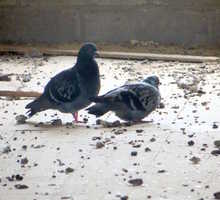
by Pigeon Patrol | Jul 6, 2023 | 4-S Gel Bird repellent, Animal Deterrent Products, Bird Deterrent Products, Bird Law, Bird Netting, Bird Spikes
First, you need to buy a pigeon trap. There are many models on the market, but most are basically large cages, with one-way entry doors.
Next, you need to set the trap in the area with the problem pigeons. You might want to wire the doors of the trap open for a few days, and set bait – cracked corn works great – in the center of the trap, and get the pigeons acclimated to feeding in the trap. Once they are used to entering the trap for the bait, you can set the trap for real. Pro Tip: Once a first pigeon enters, more will follow.
What do you do with the pigeons once you’ve trapped them? Well, you may have heard that pigeons are moderately competent at finding their way back home. Like, over oceans and stuff. They can see magnetic fields or something. So you can’t relocate them. That means you have to kill them, if you want to stop them from coming back.
Overall, it’s my opinion that pigeon exclusion methods, using spikes, electric track, or preventative netting, are the best ways to keep pigeons away for good. Far better than trapping.
Some people love to keep pigeons because they are smart, beautiful and in some cases even profitable. People will keep pigeons in pigeon coops and pigeon farms. You may not know it, but there are pigeon race competitions where people will release a pigeon away from their home and count the time it takes for the pigeon to return. Restaurants are serving pigeon as a delicacy and farms that raise pigeons are now making more and more money.
When these birds aren’t raised for pets they can become quite the nuisance, leaving droppings everywhere and causing damage to buildings. In this case they are no longer the source to relieve some stress; these pigeons are, in fact the cause of your stress. Because of this you may be looking for tips on how to trap them and if you are, you have come to the right place.
Live Traps
If you have a new pigeon problem, meaning that it started a month or two ago then you can use live traps as a way to trap the pigeons. These birds are very smart and that is why they have been trained and used by humans in many different situations from war time to the pigeon races. Because of this level of intelligence you must know what you are doing with a pigeon cage. The right bait is absolutely necessary and you can check when you purchase the cage what the best bait is. You also have to make sure that you conceal the cage to make sure that the bird does not mind going inside. Some of the best bait includes seeds that you may have purchased at your local supermarket. There is no need to get fancy when trapping pigeons.
Get Them Used to You
You will never trap the pigeons if they have no reason to come to you or into your trap. Fortunately that can be done by using corn every day. All that you have to do is get some corn and spread in the area where pigeons usually gather. When pigeons get used to the idea of getting food without actually having to hunt it or scavenge it they will keep coming back for more. Once you have them in the location every day, you want to put some of that same corn inside the cage. Now keep in mind that pigeons are fast, so you should get a trap that’s specifically designed for them. Getting another one could actually hurt the bird. These traps can be purchased at home and gardening stores everywhere and they are not harmful to the pigeons. It’s important to remove animals humanely in every situation possible.
They Will Keep Coming Back
Unless the pigeons have just found your place there is a very good chance that they will keep coming back. As mentioned before, some people make a living with pigeon races, which consists of releasing the bird and letting it find its roost. This means in addition to trapping and releasing the birds you will also need to consider what you will do to prevent them from making a roost out of your home a second time. There are many different deterrent options for pigeons. There are fences, netting and stakes that are safe and meant to keep the birds from being able to comfortably land. You will want to have a plan that uses a combination of trapping and deterrents to keep your home pigeon free.

Pigeon Trapping: How to Trap a Pigeon – Homeowners go looking for pigeon traps mostly after their pigeon problem refuses to go away with repellent interventions. Those birds just don’t know when they have overstayed their welcome and they beat the repellents every time because they’re so intelligent. For trapping, you may choose to go with either lethal or live traps.
Lethal traps
Lethal traps kills the pigeon as soon as it enters into the cage by means of a snapping or constricting mechanism. Lethal traps get rid of any pigeon captured permanently, but the intelligence of the bird is their shortcoming. When one pigeons is caught and killed, the other members of the flock will alert each other to the danger posed by the trap and none will go near it again.
The other issue with lethal trapping is that it is illegal in many areas because of its inhumane manner of getting rid of pigeons. It can also be very difficult for homeowners who are not animal control professionals, to set and use lethal traps without injuring themselves.
Live pigeon traps
The most common design of the live pigeon trap is the one-door trap. As the name suggests, it has only one door through which the pigeons enter and it is built to accommodate many birds at once. When setting this trap, know that once one pigeon enters, the others will follow. The Tomahawk Extra live pigeon trap for instance, can trap up to thirty pigeons at a time. There are also other examples like the collapsible pigeon traps. Follow the following steps to trap pigeon alive:
- Start out by getting some seed bait and spreading it out for the birds in a particular location. Repeat this over a couple of days so this eating pattern can be established for them.
- The pigeons will start returning to this spot everyday once the feeding is regular. Once this is established, get your cage ready.
- Introduce the cage trap to the location and put the seed inside it. Let them feast for another few days to gain their trust in the cage
- Set the trap to catch as many of them as possible.
As humane as live trapping seems, it is not always the best way to get rid of pigeons because after trapping and transporting them away from your abode, they are able to return to where they were captured on their own. For this reason, some people prefer to kill the birds after they’ve been trapped.
What to do after live trapping pigeons
The thing about trapping pigeons is that unlike other animals, live trapping and relocation rarely work to keep them away from your home. Pigeons are known for their amazing ability to navigate their way back home (where they roost) from anywhere they are taken to. It is this ability that made them so useful for sending communication in the olden days, and even during world wars I and II. It therefore holds that they will return to their roost spot in your house if you do trap and relocate them. It then seems that the only way to get rid of them after trapping, is to kill them; or modify your building structure to deter them from their roosting spot.
You have to decide what to do with your pigeons once you trap them – kill them or set them free. Whatever you choose, do it quickly so the pigeons do not suffer for long. If it is permitted for you to kill them where you live, do so quickly and humanely – by gassing or breaking their necks with pliers.
Bait
Traps need to be baited to attract the pigeons. Foods like grains, seeds, fruits and water, which are the birds’ favourites work best in luring them. For your trap to be effective, you should put this bait out for a period of time before actually putting it in a trap, so that the birds feel safe enough to enter your cage in large numbers.
You can use a pigeon as bait for other pigeons as well. They are social birds and are likely to perch and eat where a member of their species is, so keep a pigeon inside the cage and it will lure others in.
Source
Pigeon Patrol Products & Services is the leading manufacturer and distributor or bird deterrent (control) products in Canada. Pigeon Patrol products have solved pest bird problems in industrial, commercial, and residential settings since 2000, by using safe and humane bird
deterrents with only bird and animal friendly solutions. At Pigeon Patrol, we manufacture and offer a variety of bird deterrents, ranging from Ultra-flex Bird Spikes with UV protection, Bird Netting, 4-S Bird Gel and the best Ultrasonic and audible sound devices on the market today.
Voted Best Canadian wholesaler for Bird Deterrent products ten years in a row.
Contact us at 1 877-4-NO-BIRD,(604) 585-9279 or visit our website at www.pigeonpatrol.ca
Pigeon/Pigeon Patrol / Pigeons Roosing / Vancouver Pigeon Control / Bird Spikes / Bird Control / Bird Deterrent / PIgeon Deterrent / Surrey Pigeon Control / Pest / Seagull deterrent / Vancouver Pigeon Blog / Birds Inside Home / Pigeons in the cities / Ice Pigeons / What to do about pigeons / sparrows, Damage by Sparrows, How to Keep Raccoons Away, Why Are Raccoons Considered Pests / De-fence / Pigeon Nesting / Bird Droppings / Pigeon Dropping / woodpecker control / Professional Bird Control Company / Keep The Birds Away / Birds/rats/seagull/pigeon/woodpecker/dove/sparrow/pidgeon control/pidgeon problem/pidgeon control/flying rats/pigeon problems/ bird netting/bird gel/bird spray/bird nails/bird guard
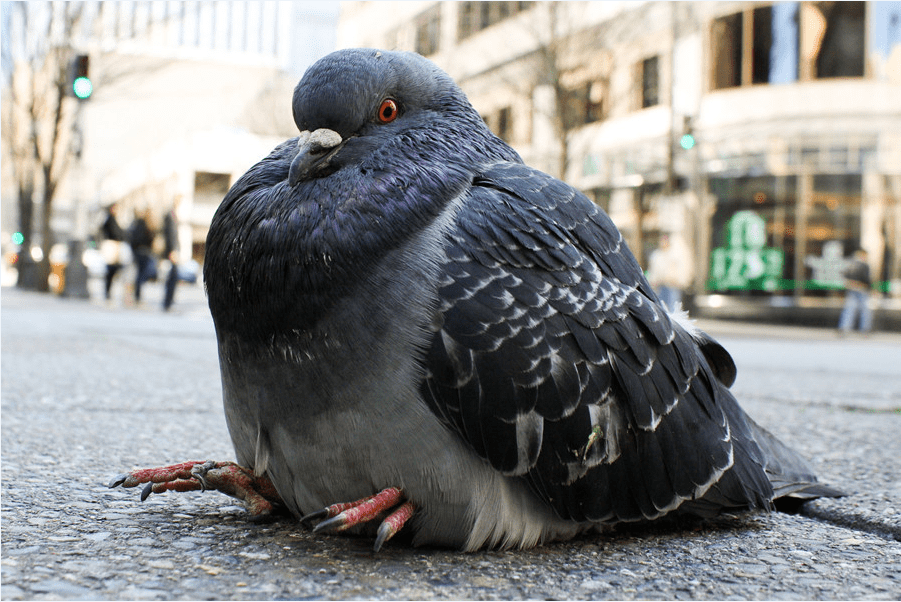
by Pigeon Patrol | Jun 30, 2023 | 4-S Gel Bird repellent, Animal Deterrent Products, Bird Deterrent Products, Bird Law, Bird Netting, Bird Spikes
Feral pigeons are the number one nuisance bird in urban areas, yet many municipalities are washing their hands of the dirty birds.
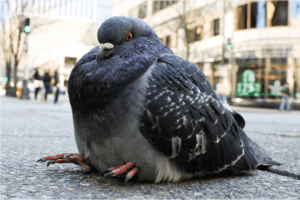
In 2013, the City of Trail, British Columbia (in the Kootenay Region of the Province’s interior) made national headlines when they scrapped a plan to relocate thousands of pigeons that plague the area to a pigeon sanctuary, only to find out that no such place exists. In the end, the city simply enacted legislation making it illegal to feed the birds and waited for them to go away.
While this sort of solution might seem appropriate to a cash strapped city council, it leaves local residents stuck with a bird problem. If you’ve got pigeons, you know how messy they can be. Their droppings cover everything underneath their resting place, and the uric acid it contains will ruin just about anything in its path. The feces can also transmit fungal, viral, and bacterial disease. They will nest in rooftop vents and air-conditioning units, causing further property damage. The long and short of the matter is that pigeons are poor roommates.
Pigeons are a year-round issue around and on homes. Roof lines provide birds with a vantage point overlooking the area surrounding your home, and most likely a regular source of food such as the neighbor’s garden. There are many other areas of the pigeons to roost such as external pipework, windowsills or worse – the chimney.
A statistic that may be the push for addressing this problem: Birds can harbor over 40 types of parasites and host internally 60 types of infectious diseases. These can be transmitted through the bird droppings found around your home.
Source
Pigeon Patrol Products & Services is the leading manufacturer and distributor or bird deterrent (control) products in Canada. Pigeon Patrol products have solved pest bird problems in industrial, commercial, and residential settings since 2000, by using safe and humane bird
deterrents with only bird and animal friendly solutions. At Pigeon Patrol, we manufacture and offer a variety of bird deterrents, ranging from Ultra-flex Bird Spikes with UV protection, Bird Netting, 4-S Bird Gel and the best Ultrasonic and audible sound devices on the market today.
Voted Best Canadian wholesaler for Bird Deterrent products ten years in a row.
Contact us at 1 877-4-NO-BIRD,(604) 585-9279 or visit our website at www.pigeonpatrol.ca
Pigeon/Pigeon Patrol / Pigeons Roosing / Vancouver Pigeon Control / Bird Spikes / Bird Control / Bird Deterrent / PIgeon Deterrent / Surrey Pigeon Control / Pest / Seagull deterrent / Vancouver Pigeon Blog / Birds Inside Home / Pigeons in the cities / Ice Pigeons / What to do about pigeons / sparrows, Damage by Sparrows, How to Keep Raccoons Away, Why Are Raccoons Considered Pests / De-fence / Pigeon Nesting / Bird Droppings / Pigeon Dropping / woodpecker control / Professional Bird Control Company / Keep The Birds Away / Birds/rats/seagull/pigeon/woodpecker/dove/sparrow/pidgeon control/pidgeon problem/pidgeon control/flying rats/pigeon problems/ bird netting/bird gel/bird spray/bird nails/bird guard
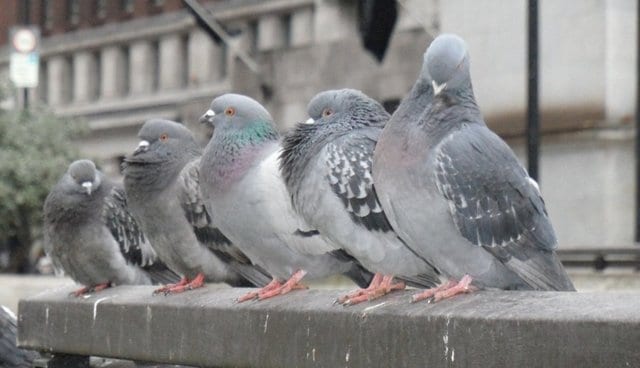
by Pigeon Patrol | Jun 30, 2023 | 4-S Gel Bird repellent, Animal Deterrent Products, Bird Deterrent Products, Bird Law, Bird Netting, Bird Spikes
Pigeons may seem harmless, but these pest birds cause millions of dollars in damage every year to buildings, ventilation systems, machinery, statues, roofs, and much more. Bird droppings and nesting materials left by pigeons pose physical problems and health hazards that can become very serious if not corrected quickly making prompt and effective professional bird control is often essential.
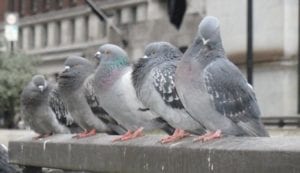
Potential Health Hazards:
There are many health risks associated with pigeons and their droppings. The bacteria, fungi, and ectoparasites that they and their droppings harbor are numerous. The four most common ways disease is passed by bird to human are: inhalation of fecal dust, food and water contaminated with bird feces, direct contact with feces, and parasitic transfer.
Pigeon droppings can expose humans to many diseases, including salmonella, Newcastle disease, candidiasis, encephalitis, orthosis, and toxoplasmosis. In addition, they can also carry cryptococcosis, and coccidiodomycosis, which cause meningitis. The droppings may also harbor growth of fungus, which causes histoplasmosis. Fleas, lice, mites, and other pests often live on these birds, hitching a ride to where ever they want to jump off. Pigeons may also attract other pests, such as rats, which feed on dead pigeons and food that well-intentioned bird lovers may scatter for them.
In addition to disease, bird droppings are known for triggering people to slip and fall, which makes it especially important to rid the birds from highly trafficked areas.
Damage Caused by Pigeons:
These are messy birds, leaving droppings everywhere they go, particularly near their roost sites. Pigeon droppings are not just gross, they are also full of uric acid which makes them extremely corrosive. The droppings are the direct cause of millions of dollars in damage to buildings and other structures. Particularly vulnerable are painted surfaces, awnings, signs, and other similar surfaces. A tragic example of the corrosiveness of pigeon droppings is the Minnesota bridge accident in 2007, which was found to be the direct result of bird droppings eating away at the metal bridge supports until they weakened.
In addition to the damage cause by their acidic droppings, pigeon nests can also cause damage. Pest birds will often build nests in gutters or on roof corners blocking essential drainage systems. Every year several warehouses experience roof damage, and even collapse, when drainage systems have been blocked and standing water rises just six inches. Bird nests can also block ventilation systems, which not only prevents exhaust of potentially harmful gases, but also has the potential to spread diseases. Fire is also a potential hazard. Nesting materials are usually flammable, consisting of twigs, straw, grasses and dried droppings. When pest birds build their nests inside electric signs or other machinery there is a great risk of fire.
Pigeons are creatures of habit and highly social. Once they have found a cozy spot the will return again and again, bringing along more of their pigeon pals. Prolific breeders, pigeons can hatch several broods a year, sometimes even laying a new clutch before the previous have even hatched. Often our buildings and structures have architectural features such as drain spouts and eaves that make perfect nesting spots for these birds. Pigeons are comfortable around humans and they’re hard to scare away or deter. Once a flock of stubborn unwanted pigeons have set up shop in/on your building, it can be stubbornly resistant to removal, often requiring the services of a pest control or animal control professional. As is true of many pests that invade our homes and businesses, the first step to controlling feral pigeons is to remove their food source.
Tips to deter pigeons:
- Don’t feed the pigeons.
- Screen drains and gutters to make your property less attractive to pigeons.
- Encourage children to pick up spilled food – and teach them NOT to feed pigeons
- Keep areas around trash bins and outdoor dining areas clean
- Eliminate water sources such as bird baths, over-watered lawns, or kiddy pools.
Source
Pigeon Patrol Products & Services is the leading manufacturer and distributor or bird deterrent (control) products in Canada. Pigeon Patrol products have solved pest bird problems in industrial, commercial, and residential settings since 2000, by using safe and humane bird
deterrents with only bird and animal friendly solutions. At Pigeon Patrol, we manufacture and offer a variety of bird deterrents, ranging from Ultra-flex Bird Spikes with UV protection, Bird Netting, 4-S Bird Gel and the best Ultrasonic and audible sound devices on the market today.
Voted Best Canadian wholesaler for Bird Deterrent products ten years in a row.
Contact us at 1 877-4-NO-BIRD,(604) 585-9279 or visit our website at www.pigeonpatrol.ca
Pigeon/Pigeon Patrol / Pigeons Roosing / Vancouver Pigeon Control / Bird Spikes / Bird Control / Bird Deterrent / PIgeon Deterrent / Surrey Pigeon Control / Pest / Seagull deterrent / Vancouver Pigeon Blog / Birds Inside Home / Pigeons in the cities / Ice Pigeons / What to do about pigeons / sparrows, Damage by Sparrows, How to Keep Raccoons Away, Why Are Raccoons Considered Pests / De-fence / Pigeon Nesting / Bird Droppings / Pigeon Dropping / woodpecker control / Professional Bird Control Company / Keep The Birds Away / Birds/rats/seagull/pigeon/woodpecker/dove/sparrow/pidgeon control/pidgeon problem/pidgeon control/flying rats/pigeon problems/ bird netting/bird gel/bird spray/bird nails/bird guard











